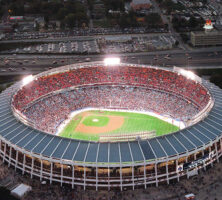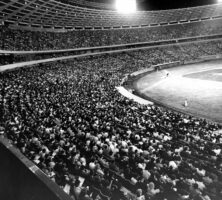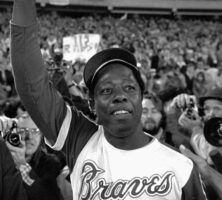Atlanta–Fulton County Stadium (known as Atlanta Stadium from 1966 to 1975) lured major league sports to the Deep South. In early 1964 the National League Milwaukee Braves baseball team agreed verbally to move to Atlanta if a stadium were finished in time for the 1966 season. That October, with construction of the ballpark under way, the Braves officially committed to make Atlanta their home, signing a twenty-five-year lease to play at the stadium. In June 1965, with the stadium finished, the National Football League awarded the city an expansion franchise, soon named the Atlanta Falcons. Atlanta was then poised to join the ranks of the nation’s elite cities.
The idea for the stadium originated when Ivan Allen Jr., owner of an office-supply company and president of the Atlanta Chamber of Commerce, ran for mayor in 1961. In his campaign he promised to build a modern sports facility to attract a major league baseball team to Atlanta. After winning the election, Allen’s next challenge was to choose a suitable site for a stadium, persuade a major league team to play there, and obtain the money to build it.
Allen selected a forty-seven-acre plot of undeveloped urban renewal property in an area known as Washington-Rawson to build the stadium. The mayor believed that this spot, one-quarter of a mile south of the state capitol and the downtown business district and near several major highways, was an ideal location. He and Furman Bisher, sports editor of the Atlanta Journal, showed the site to Charlie Finley, owner of the Kansas City Athletics, an American League team. Impressed with the location, Finley discussed stadium designs with Allen that afternoon. The mayor then obtained financial support from his friend and political backer Mills B. Lane Jr., president of Citizens and Southern Bank.
Allen learned in July 1963 that the American League would not allow the Athletics to move to Atlanta. He and the Stadium Authority, a group of the city’s leading businessmen, bankers, and lawyers whom Lane had recommended to Allen, decided to pursue the Milwaukee Braves. In February 1964 the Braves agreed to move to Atlanta.
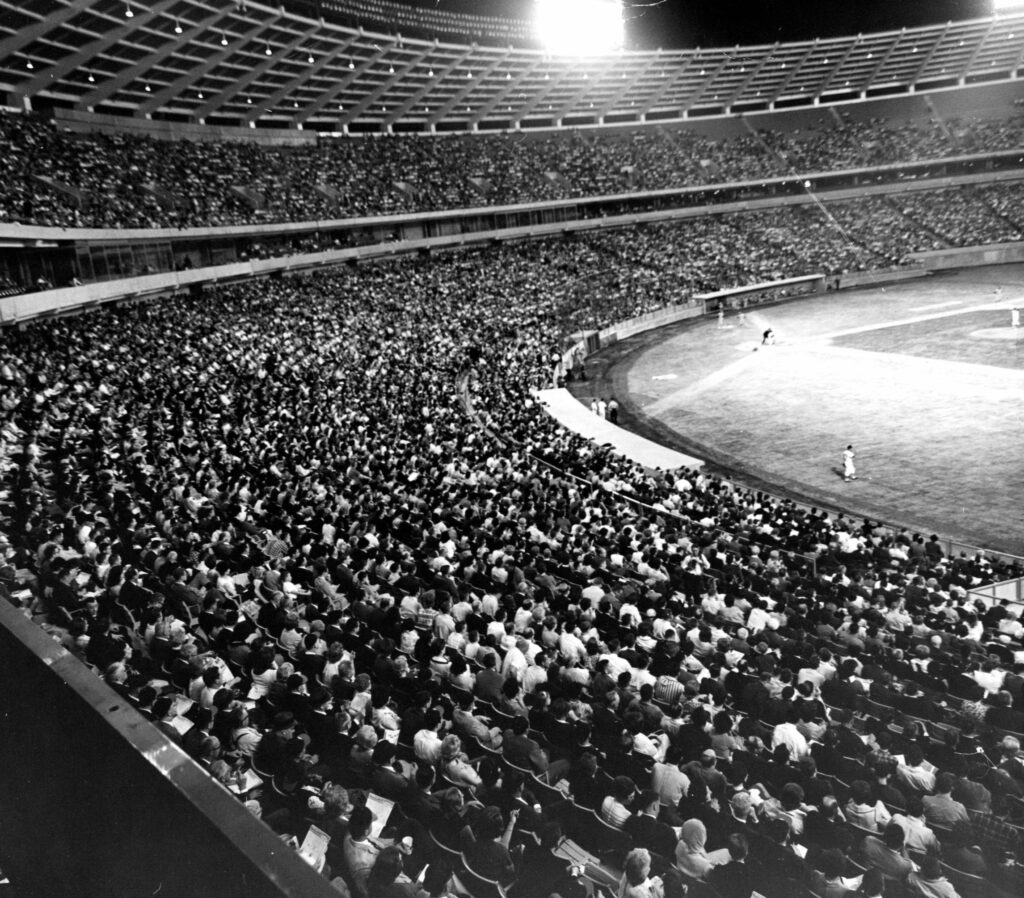
Courtesy of Atlanta Journal-Constitution.
A month later, on April 15, 1964, Allen, Lane, Bisher, and forty-four other dignitaries broke ground for the stadium with ceremonial shovels. The mayor also posed for pictures while driving a bulldozer. On April 9, 1965, the stadium was finished. That evening the Milwaukee Braves played the Detroit Tigers in an exhibition game at Atlanta Stadium, which had been built in record time at a cost of $18 million.
Architecturally Atlanta Stadium, designed jointly by the Atlanta firms FABRAP and Heery and Heery, resembled many other stadiums built in the 1960s and 1970s. Made of concrete and steel, the circular multipurpose facility was designed for baseball and football. For baseball the stadium’s three levels seated about 52,000 and for football about 62,000. Although functional, the stadium lacked the idiosyncrasies and charm that gave a sense of intimacy and uniqueness to many of the nation’s ballparks built before World War II (1941-45). One sportswriter derided Atlanta Stadium and the other stadiums constructed in this era as “concrete doughnuts.”
Although the stadium was finished in time for the 1965 baseball season, a lawsuit filed by Milwaukee County officials prevented the Braves from moving to Atlanta until 1966. Meanwhile Atlanta’s renowned minor league team, the Atlanta Crackers of the AAA International League, played at the stadium. In 1965 the stadium also hosted a Barbra Streisand concert and a performance by the Beatles. In February 1966 supporters of the Vietnam War (1964-73) held a prayer rally in the stadium at which Dean Rusk, the Georgia secretary of state, gave the keynote address.
Finally on April 12, 1966, the Atlanta Braves played their first regular-season major league baseball game at Atlanta Stadium. Mayor Allen threw out the first ball. A sellout crowd saw the Braves lose the game to the Pittsburgh Pirates three to two in thirteen innings. On September 11, 1966, the Atlanta Falcons lost to the Los Angeles Rams nineteen to fourteen in the first regular-season professional football game played at the stadium. The following year the Atlanta Chiefs of the National Professional Soccer League (later the North American Soccer League) began their eight-year (1967-69, 1971-72, and 1979-81) residency at the stadium.
The stadium’s circular design and especially its altitude of more than 1,000 feet above sea level made home runs easy to hit, giving it the nickname “the launching pad.” Braves player Hank Aaron hit his 500th, 600th, and 700th home runs at the stadium. On April 8, 1974, on his first swing of the season in Atlanta, Aaron hit home run number 715 to become the all-time leader in career home runs.
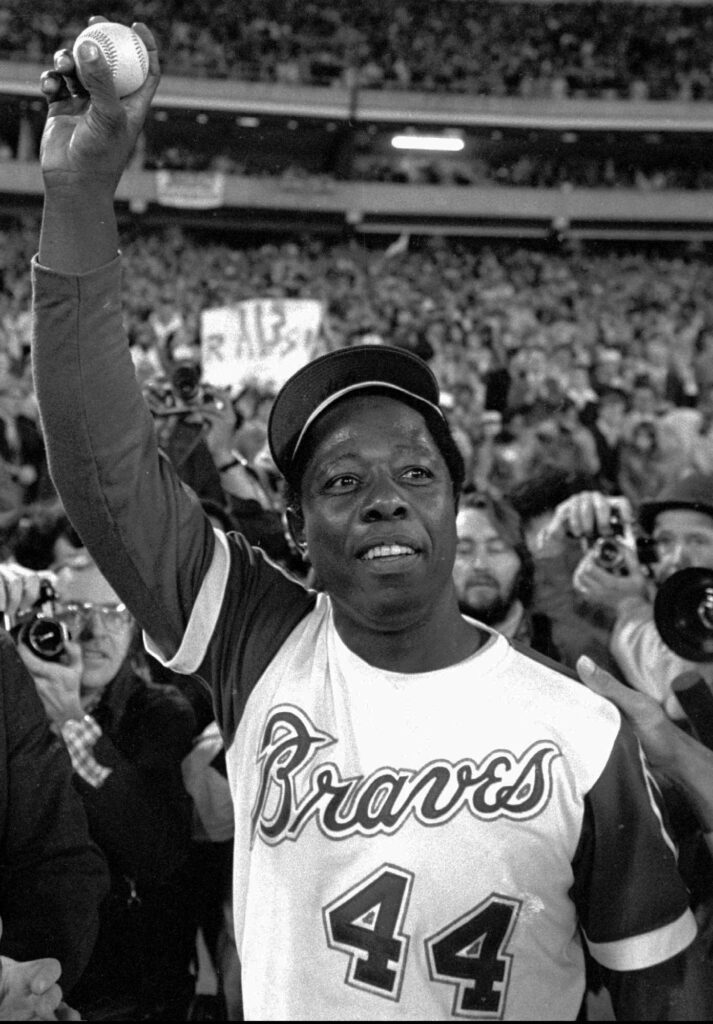
Photograph by Major League Baseball
Other than Aaron’s milestone homers, Atlanta sports fans had little to cheer. For their first twenty-five years in Atlanta the Braves were statistically the worst team in baseball. For the twenty-six years that the Falcons played at the stadium, the team managed only six winning seasons. When the novelty of the games wore off, attendance plummeted. Although the Chiefs won a league championship in 1968, less than 5,800 fans attended the team’s home games. Attendance at Braves games reached its nadir on September 8, 1975, when only 737 people showed up for a contest against the Houston Astros. A year earlier the Falcons drew barely 10,000 for a game against the Green Bay Packers.
The 1991 season was a turning point in the history of the stadium and Atlanta sports. The Falcons played their last game at the stadium that season and then moved to the Georgia Dome. More important was the vastly improved play of the Braves. In 1991 the Braves won their first National League pennant since moving to Atlanta. A record of more than 2 million fans attended Braves games at the stadium.
In 1996 the stadium hosted the baseball competition of the Centennial Olympic Games. That year was also the last in which a professional team played in the stadium. The Braves played their last regular-season home game there on September 23. Appropriately, former mayor Ivan Allen, then in his eighties, threw out the ceremonial first ball. The last game played at the stadium was on October 24, when the New York Yankees beat the Braves in game five of the World Series. On August 2, 1997, Atlanta–Fulton County Stadium was demolished by implosion. In less than thirty seconds the stadium was reduced to a pile of rubble. The site of the former stadium served as a parking lot for Turner Field (later Center Parc Stadium), the home of the Braves from 1997 to 2016.








